Salmon & Pea Rice Balls

Written by Kenny Ekerin
Fact Checked by Mindsmaking Professionals
18th, July, 2025
This post may contain affiliate links. Please read our disclosure policy.
These Salmon & Pea Rice Balls are a nutritious, family-friendly meal perfect for lunch or dinner. Packed with protein, healthy fats, and fiber, they're ideal for baby-led weaning, toddlers, and adults. Easy to make and customizable.
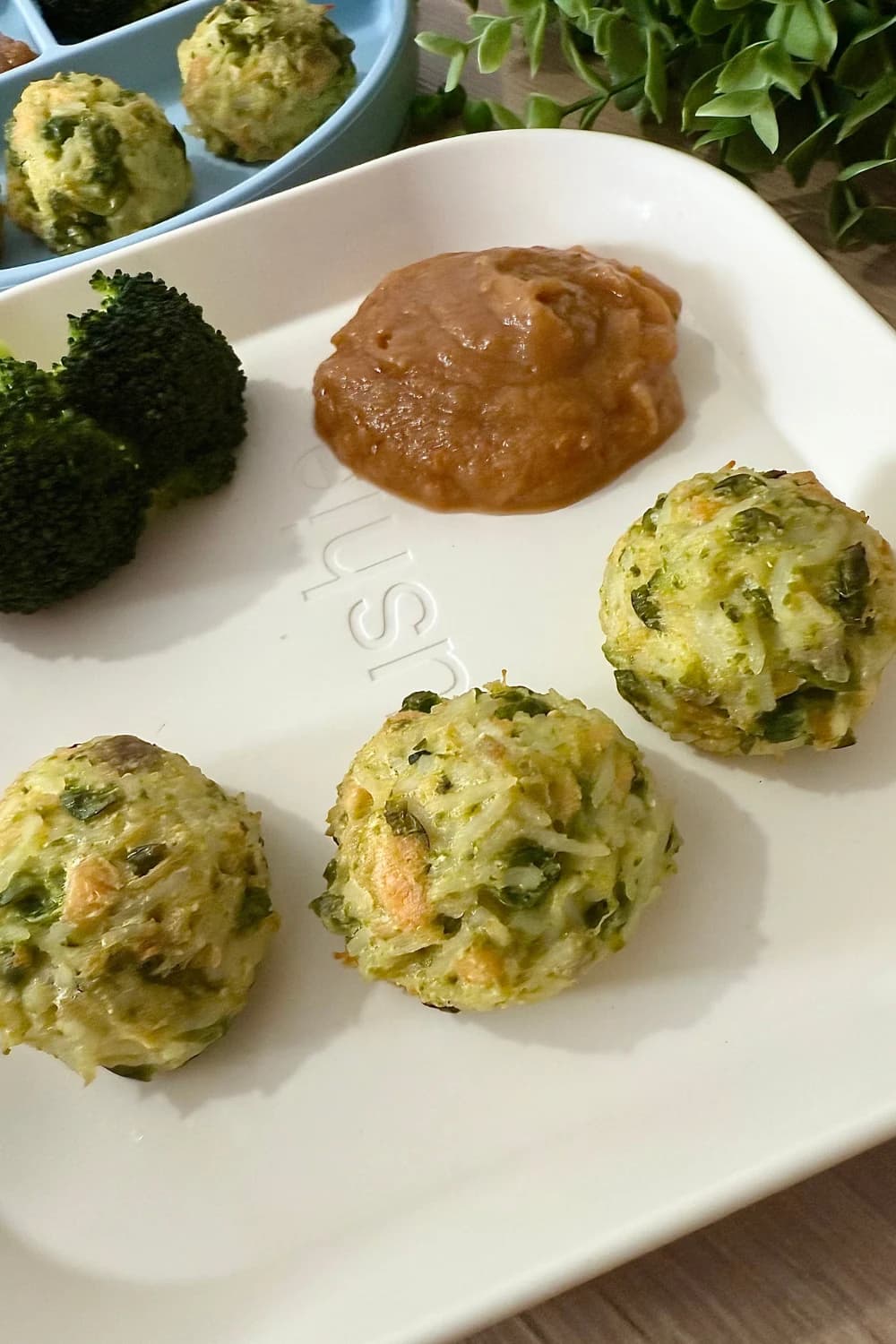
Reasons to Love These Salmon, Peas, Rice Balls
Nutritious and Balanced: These rice balls are a good source of protein, healthy fats, and fiber. The salmon provides omega-3 fatty acids and protein, while the peas add vitamins and fiber. The rice and cheese contribute carbohydrates and extra nutrients, making this a well-rounded meal.
Easy to Make and Customizable: The recipe requires minimal ingredients and is easy to prepare. You can easily substitute other vegetables, proteins, or seasonings based on your family's preferences. It's a great way to use whatever ingredients you have on hand.
Perfect for Little Hands: The rice balls are easy to hold and bite into, making them an excellent choice for babies and toddlers, especially those practicing baby-led weaning. Their soft texture is gentle on little mouths while still providing a satisfying bite.
Great for Meal Prep: You can make a large batch and store it in the fridge or freezer for busy days. They reheat well and are perfect for quick lunches, snacks, or dinners, which is a huge time-saver for busy parents.
Versatile: These rice balls can be served in various ways, whether as a snack, part of a meal, or with different dipping sauces. They can be paired with veggies, fruits, or other side dishes, making them suitable for any time of day.
Kid-Friendly Flavors: The combination of salmon, cheese, and mild seasonings like onion and garlic powder makes these rice balls flavorful without being overwhelming for young taste buds. The texture is soft yet holds together well, which makes them easy for kids to eat.
Encourages Healthy Eating: They’re a fun and tasty way to introduce kids to fish and vegetables in a form that’s easy to enjoy. Plus, using wholesome ingredients like cheese, rice, and fresh peas helps promote healthy eating habits.
Freezable for Convenience: If you make extra, you can freeze the rice balls and pull them out whenever you need them. They’re a great grab-and-go option for busy parents or for preparing meals ahead of time.
Suitable for All Ages: Whether you’re serving them to a baby, toddler, or even adults, these rice balls are versatile enough for everyone to enjoy. They can be made with little to no seasoning for babies or seasoned to taste for adults, making them a versatile dish that the whole family can enjoy.
With so many benefits, these Salmon Peas Rice Balls will surely become a regular, well-loved part of your family’s meal rotation!
Salmon & Peas Rice Balls Recipe
Ingredients
- 1 cup of green peas (fresh or frozen)
- 1 salmon fillet (about 120g)
- 1 cup cooked rice
- 1/2 cup grated cheese (cheddar works well)
- 1 egg
- 1 tsp onion powder
- 1 tsp garlic powder
Mindsmaking

Instructions
1. Steam the Salmon and Peas: Fill a pot with water and boil it gently. Place a steamer basket on top. Place the salmon fillet and the peas in the steamer basket. Cover with a lid and steam for 8-10 minutes, or until the salmon is cooked and the peas are tender. The salmon should flake easily when tested with a fork.
2. Mash the Salmon and Peas: Once the salmon and peas are cooked, remove them from the steamer and let them cool slightly. Then, using a fork or potato masher, mash them together in a mixing bowl. Break the salmon into small, bite-sized pieces, then mix them. You want to achieve a soft, slightly lumpy texture that is easy for babies and toddlers to eat.
Mindsmaking

3. Add the Other Ingredients: Stir in the cooked rice (make sure it’s cooled down slightly so it doesn’t burn). Add the grated cheese to the mixture. This will help bind the balls together and add some extra flavor. Crack an egg into the bowl to help the mixture hold together and add extra protein. Add the onion powder and garlic powder for flavor. These are gentle seasonings that make the balls tasty without being too strong for little ones.
Mindsmaking
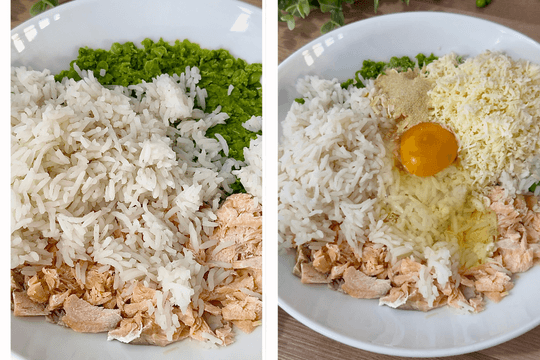
4. Mix and Form the Rice Balls: Use your hands or a spatula to combine all the ingredients until you have a sticky, cohesive mixture. Take about a tablespoon of the mixture and roll it into small balls. You can make them a bit smaller or bigger depending on what size is appropriate for your baby or toddler.
Mindsmaking
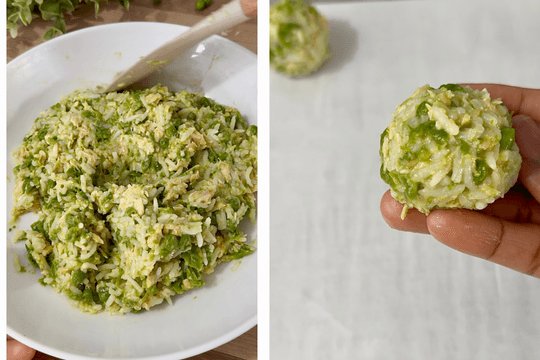
5. Bake the Rice Balls: Line a baking tray with parchment paper or lightly spray it with nonstick cooking spray. Arrange the rice balls on the tray, leaving a little space between each one. Place the tray in a preheated oven at 350°F (175°C) and bake for about 25-30 minutes, or until the rice balls are golden and slightly crispy on the outside. To ensure even cooking, flip them halfway through the baking time.
Mindsmaking
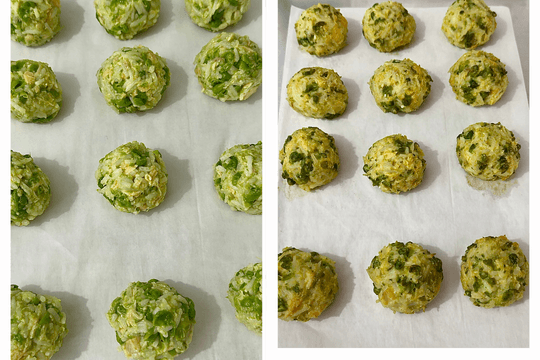
6. Serve and Enjoy: Let the rice balls cool slightly before serving them to your baby or toddler. They should be soft on the inside but crisp on the outside. Serve as a snack, lunch, or dinner. These rice balls are great on their own or can be paired with a side of steamed vegetables or a dipping sauce, such as plain yogurt or tomato sauce.
Mindsmaking
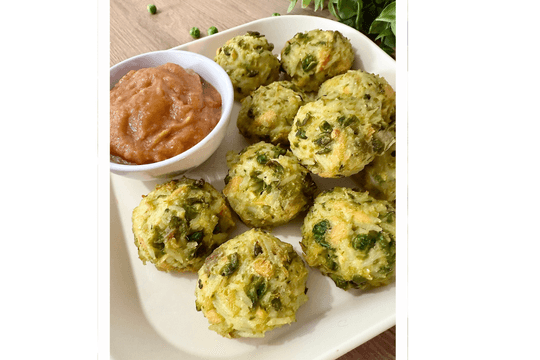
Read This Next

Recipe Ebook
Essential Guide to Starting Solids for Babies 6 Months+ - LBH Top 70 Baby Puree & Porridge Recipes eBook.
Start your baby’s solids journey with confidence using this "70 Baby Purees & Porridges" eBook! Created with care, this digital guide is packed with nutrient-rich recipes for babies 6 months and older, including purees and porridges tailored to each stage of your baby’s development.
Tips for Success
Ensure the Salmon is Cooked Well: Make sure the salmon is fully cooked through before mashing it. It should easily flake apart when tested with a fork. If it's undercooked, it can result in a raw, unpleasant texture in the rice balls. Also, remember to remove any bones or skin from the salmon before mashing it.
Use fresh or tender peas: Both fresh and frozen peas work well. If you’re using frozen peas, thaw them before steaming to ensure even cooking. Check that the peas are tender enough to mash easily. If they’re too tough, they may make the rice balls harder for babies or toddlers to chew.
Cool Rice Before Using: If the rice is too hot when mixed, it may cause the egg to cook prematurely or the mixture to become too runny. Let the rice cool to room temperature before adding it to the mash to ensure the right consistency.
Adjust the Consistency: If the mixture is too sticky or wet to form into balls, try adding a little extra rice or a tablespoon of breadcrumbs to help bind the ingredients together. If the mixture is too dry and hard to stick together, add a bit of milk or a splash of olive oil to help it hold together.
Use the Right Rice: Opt for short-grain or medium-grain rice. These types are stickier and help the balls hold together better. Long-grain rice might be too fluffy and cause the balls to fall apart.
Forming the Rice Balls: Wet your hands lightly with water or oil to prevent the mixture from sticking to them as you form the balls.
Bake Until Golden: Bake the rice balls until the outside is slightly golden and crisp, which nicely contrasts with the soft interior. Keep an eye on them, as oven temperatures can vary, and you may need to adjust the baking time slightly.
Ingredients, Substitutions, and Additions
Substitutions
Salmon: If salmon is not available or you prefer a different type of fish, you can substitute it with another fish, such as trout, cod, or tilapia. For a vegetarian option, you can substitute the salmon with tofu (firm or mashed) or lentils for added protein.
Green Peas: If your child doesn’t like peas or you want a different vegetable, you can substitute green beans, corn, grated or finely chopped carrots, or sweet potatoes. Spinach or other leafy greens can also be used, finely chopped or steamed, to boost their nutrient content.
Rice: You can swap the regular rice for quinoa, millet, or couscous for a different texture or added nutritional benefits. If you're avoiding grains, try using cauliflower rice as a low-carb alternative.
Cheese: For a dairy-free version, you can substitute nutritional yeast (for a cheesy flavor), dairy-free cheese, or even skip it altogether if you prefer. Cream cheese or a mild ricotta can be a good substitute for a softer texture.
Egg: If you need an egg-free option, use a flaxseed meal (1 tablespoon of flaxseed mixed with 3 tablespoons of water) as a binder. Mashed avocado can also work to hold the mixture together, adding healthy fats.
Onion and Garlic Powder: If you want to keep the recipe mild for babies or toddlers, you can skip the onion and garlic powder entirely or substitute them with herbs like basil, oregano, or parsley for a more subtle flavor. Cumin or turmeric can add a fun twist and bring in different flavors.
Additions
Herbs and Greens: Fresh parsley, basil, dill, or cilantro can elevate the flavor and add extra nutrients. For added texture and flavor, you can also include finely chopped spinach or kale.
Veggies: To increase the vegetable content, add grated carrots, zucchini, or butternut squash. These can be grated and mixed in for extra fiber and nutrients. You could also try adding finely chopped bell peppers or broccoli florets.
Seasoning Variations: To enhance the flavor, add a pinch of paprika, lemon zest, or a small amount of cumin for a slightly different flavor profile. Drizzling lemon juice over the balls before serving adds a fresh, tangy touch.
Healthy Fats: Add mashed avocado or olive oil to the mixture for a healthy fat boost. Chia seeds or ground flax seeds can also be added for omega-3s.
Serving Suggestions
With a Side of Veggies: Serve the rice balls alongside steamed or roasted vegetables like carrots, sweet potatoes, or broccoli. These add extra nutrients and fiber to the meal.
With a Dipping Sauce: For a fun twist, pair the rice balls with a mild dipping sauce, such as plain yogurt, apple sauce, or a tomato-based dip. For added flavor, you can even mix in a little lemon juice or olive oil with the yogurt.
On a Bed of Greens: For a fresh and light meal, place the rice balls on a bed of spinach, arugula, or a mixed green salad. If desired, top with a light vinaigrette.
As part of a Family Platter: These rice balls can be served as part of a larger family platter with other toddler-friendly snacks, such as cheese sticks, fresh fruit, whole grain crackers, and mini sandwiches. This is a great option for a balanced lunch or dinner.
As a Snack: Serve the rice balls as a simple snack for babies and toddlers, either on their own or with cut-up fruit like bananas or berries for a sweeter addition.
With Mashed Avocado or Guacamole: For a creamy addition, serve the rice balls with mashed avocado or mild guacamole. This adds healthy fats and a smooth texture, which toddlers often love.
With a Side of Fruit: Pair the rice balls with a side of soft fruit slices, such as apple, pear, or melon. This adds a sweet contrast to the savory rice balls and makes for a more colorful and well-rounded meal.
How to store
In the Refrigerator: Allow the rice balls to cool completely before storing them to prevent condensation inside the storage container, which can make them soggy. Place the cooled rice balls in an airtight container to keep them fresh.
They can be stored in the refrigerator for up to 3 days. To reheat, place them in a preheated oven at 350°F (175°C) for about 10 minutes or until warmed through. You can also microwave them for 20-30 seconds until heated.
In the Freezer: If you'd like to store them longer, arrange the rice balls in a single layer on a baking sheet and freeze them until firm (about 1-2 hours). This prevents them from sticking together.
Once frozen, transfer the rice balls into a freezer-safe airtight container or freezer bag. You can layer them with parchment paper to prevent sticking. They can be stored in the freezer for up to 1-2 months.
When ready to eat, you can reheat them directly from frozen. Bake them in a preheated oven at 350°F (175°C) for about 20 minutes, or microwave them in short intervals (20-30 seconds) until heated through.
Frequently Asked Questions
Can I use canned salmon instead of fresh salmon?
Yes, you can! Just drain it well and remove any bones or skin. While fresh salmon gives a softer texture, canned works well and is super convenient.
What type of rice works best for this recipe?
Short- or medium-grain rice is ideal because it’s stickier and holds the rice balls together better. Long-grain rice tends to be fluffier and is more prone to falling apart.
Can I make this recipe dairy-free?
Absolutely. You can substitute the cheese with dairy-free cheese, nutritional yeast, or leave it out completely. The flavor is still delicious.
Is there an egg substitute for this recipe?
Yes! You can use a flaxseed egg (made by mixing 1 tablespoon of ground flaxseed with 3 tablespoons of water) or mashed avocado as a binder.
Can I prepare these in advance?
Yes, these are great for meal prep. Store them in the fridge for up to 3 days, or freeze them for up to 2 months.
How do I reheat the rice balls?
To reheat, bake in a 350°F (175°C) oven for 10 minutes (20 minutes if frozen), or microwave for 20–30 seconds until warmed through
Are these safe for babies?
Yes! They’re easy to grasp and are made with mild seasonings.
Can I use other vegetables?
Definitely. Feel free to use corn, carrots, spinach, zucchini, or even sweet potatoes. Just make sure the veggies are cooked and soft, so they're easy to mash and eat.
What dipping sauces go well with these rice balls?
Try plain yogurt, mild tomato sauce, guacamole, or even a light cheese sauce. They’re great with both savory and creamy dips.
Can I pan-fry or air-fry them instead of baking?
Yes! Pan-fry in a lightly oiled skillet until golden brown on both sides, or air-fry at 375°F (190°C) for 10– 12 minutes, flipping halfway through.
Can I make these completely vegetarian?
You can swap out the salmon for mashed tofu, cooked lentils, or finely chopped mushrooms to keep the protein while going meat-free.
My mixture is too wet or too dry — what should I do?
If it’s too wet, add more rice, breadcrumbs, or oat flour. If it’s too dry, add a splash of milk, a bit of olive oil, or some extra mashed peas.
How many rice balls does this recipe make?
It depends on the size you roll them, but typically you'll get about 12 to 15 small, toddler-friendly rice balls.
Can adults eat these too?
Absolutely! They're tasty and nutritious for all ages. You can serve them with a salad, grain bowl, or wrap them in lettuce for a quick adult lunch.
What’s the best way to serve these to toddlers?
Serve warm with a soft fruit on the side, or enjoy with a fun dip like yogurt or avocado mash. Their size and texture make them perfect for little hads.
Was this article helpful?
How many stars are you giving this article?
Leave a comment
Your email address will not be published.
Comments
More From Recipe

Apple Carrot Purée (Homemade Baby Food)
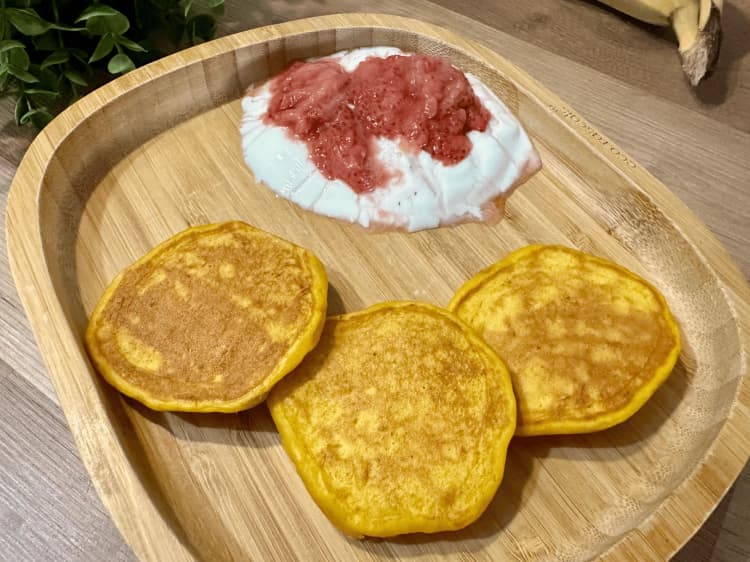
Pumpkin Banana Pancakes
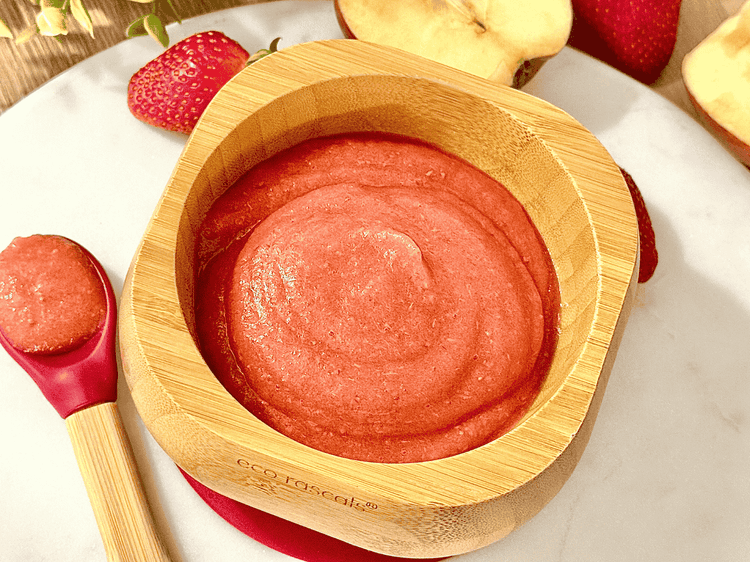
Apple & Strawberry Puree

Cauli-Bean Cheesy Pasta

Apple Carrot Porridge
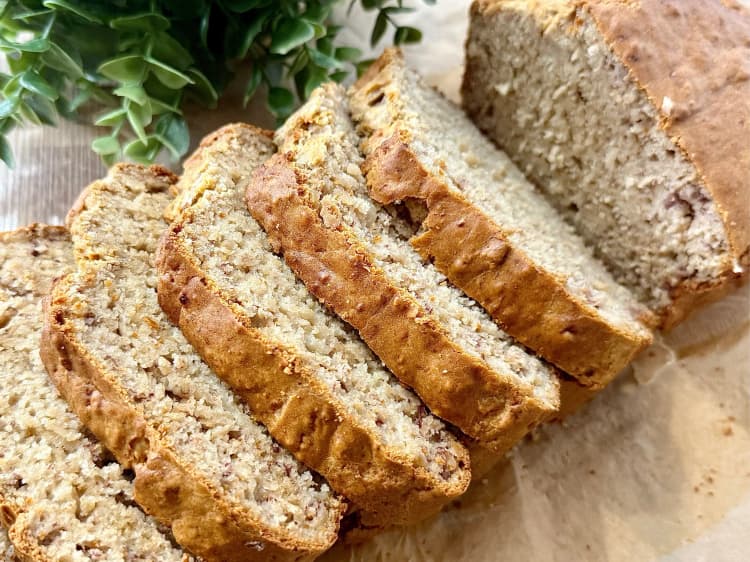
Easy Homemade Banana Bread
Get new recipes to your inbox
Subscribe to our weekly newsletter and get new recipes sent to your inbox!